Razer's SWTOR Keyboard Would Be Better If It Weren't a Keyboard At All
Razer's Star Wars: The Old Republic keyboard includes some amazing features, but low-quality parts and performance issues ultimately get in the way.
Razer didn't make a name for itself by creating cheap, no-frills hardware. Quite the opposite; it has spent years honing its ability to cram features into peripherals that are designed to be wholly unique from the ground up. The Star Wars: The Old Republic Keyboard from Razer absolutely falls in line with the company's past efforts, offering capabilities found nowhere else in the marketplace. The problem is that innovation, especially in the hardware market, comes at a price.
Fallout 4 Next Gen Update Comparison Stellar Blade - Hard Mode No Damage Abaddon Boss Gameplay Stellar Blade - (Almost) All Outfits Granblue Fantasy: Relink - New Content Trailer Modern Warfare III - New Season 3 Reloaded Modern Warfare Zombies Update River City Girls 2 - New Playable Characters DLC Reveal!! That Time I Got Reincarnated as a Slime ISEKAI Chronicles – Official Announcement Trailer MEGATON MUSASHI W: WIRED – Official OP “MUSASHI English Ver.” Trailer Stellar Blade - Official Launch Trailer | PS5 Games Gothic 1 Remake | Official Collector's Edition Trailer SaGa Emerald Beyond – Official Launch Trailer Paper Mario: The Thousand-Year Door – Official Switch Overview Trailer
Please enter your date of birth to view this video
By clicking 'enter', you agree to GameSpot's
Terms of Use and Privacy Policy
At $250, the SWTOR Keyboard is far and away the most expensive keyboard available at major retailers. That said, it does feature Razer's cutting-edge Switchblade-UI, a combination of a full-color multi-touch screen next to 10 customizable buttons capable of displaying custom icons. These features aren't cheap, and high prices don't mean much if the functionality isn't up to par.
We are going to examine the functionality of the Switchblade-UI first, and then we'll address the quality of the keyboard on its own merits.
Switchblade-UI – Hardware
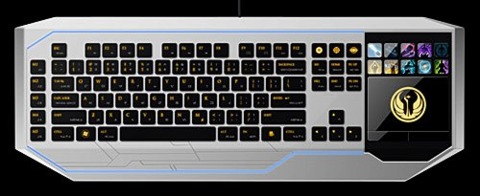
The full-color multi-touch screen is a thing of beauty, producing vibrant colors and deep blacks. The 4.05-inch display features a resolution of 480x800 pixels, pushing a respectable 236 PPI (pixels per inch).
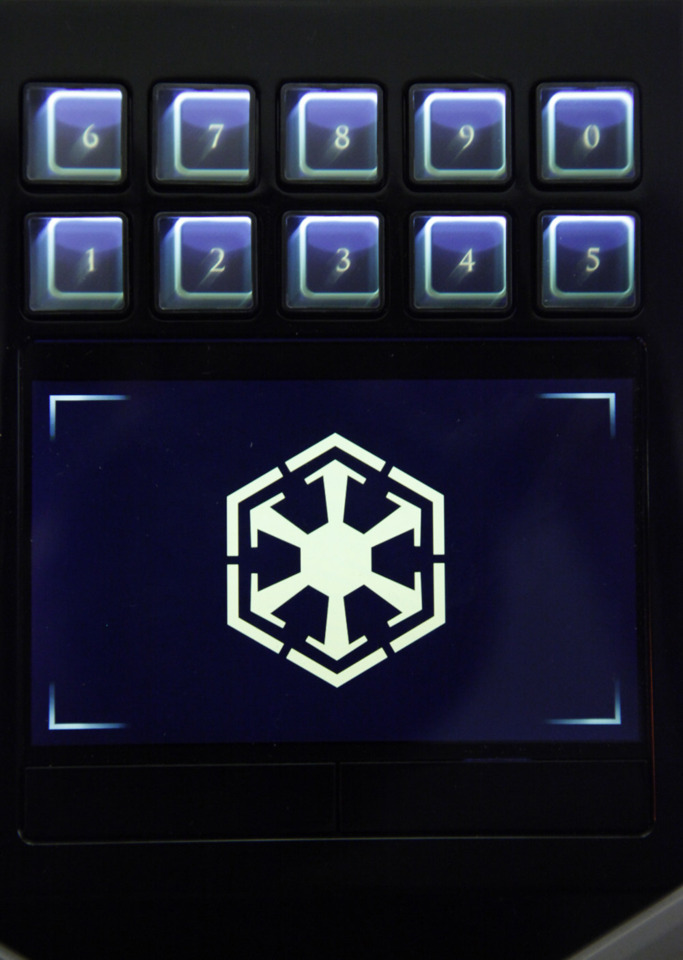 The touchpad within the display is based on Synaptics' technology, one of the leading manufacturers of touchpads for laptops. It features multi-touch capabilities with up to three points of contact, and quite simply, it works. It's configurable, accurate, and responsive. Beyond five-point multi-touch gestures, you can't ask for much more in a touchpad.
The touchpad within the display is based on Synaptics' technology, one of the leading manufacturers of touchpads for laptops. It features multi-touch capabilities with up to three points of contact, and quite simply, it works. It's configurable, accurate, and responsive. Beyond five-point multi-touch gestures, you can't ask for much more in a touchpad.
The 10 dynamic adaptive tactile keys (DAT keys) that sit above the display are less impressive. Each key is a piece of clear plastic that acts as a lens, taking the light from the screen beneath the key and directing it towards the left. The unfortunate part about that is all of Razer’s promotional images represent the DAT keys with the icon reproduced at or near the top of the key. This implies that there is a screen within each key which does not appear to be the case.
The SWTOR Keyboard simply does not reproduce the claims made by Razer's promotional mock-ups, and the result is a screen that appears blurred or recessed well below the key unless you are within the sweet spot, as defined by the lens. Here are some photos we took that illustrate the aforementioned discrepancies.

The only conclusion we can draw is that Razer has implemented an array of screens within a single sheet, or it's activating regions of a single large screen beneath the entire DAT key panel. Razer’s current solution is the cheaper approach, and again, slightly contrary to the images used on their site.
There are other keyboards on the market that feature nine properly embedded OLED keys, with a single color, for around $180. If you prefer the full-color variety, Art Lebedev has got you covered at the cost of $530 for a 15-key panel, or $2,000 for a full-sized keyboard. Its latest product line has taken a step back, reverting to a recessed LCD panel, similar to the technique employed in the SWTOR Keyboard. You can preorder a six-key panel for $375 and a compact keyboard for $1,100. Below is an image that represents the concept of the expensive screen per key method employed in the $2,000 keyboard (i.e. not in Razer's product).
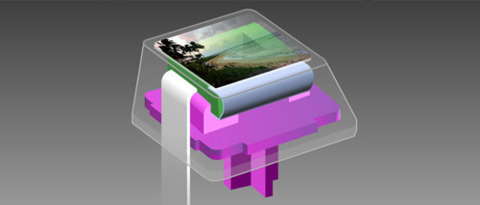
With these numbers in mind, Razer wins points for selling this young technology at a reasonable price compared to the competition, especially with a beautiful multi-touch screen beside it. Our only complaint lies in the fact that its promo images reflect a product that is drastically different from what it's offering.
We also couldn't help but wonder why the Switchblade-UI isn't on the left-hand side of the keyboard. It's doubtful that gamers will want to remove their hand from their mouse to hit macro keys, or crane their left hand over to the right side of the board. This product might be better as a stand-alone peripheral, rather than integrated into a keyboard.
Switchblade-UI – Software
The software behind the Switchblade-UI is as hit-and-miss as the hardware. The most reliable bit is by far Synaptics' configuration utility, which should look familiar to anyone who has configured a touchpad on a laptop. There are options for sensitivity, region detection, and gesture assignment. It's straightforward and robust.
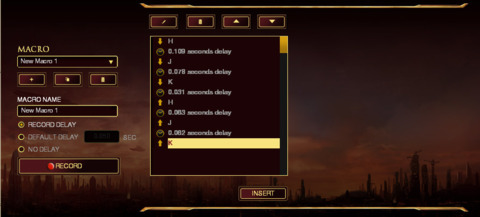
The heart of the SWTOR Keyboard lies in Razer's Synapse (not Synaptics) 2.0 configuration utility. This cloud-based system lets you customize macros, profiles, lighting, and the icons displayed on DAT keys. Sadly, you must provide your own icons if you want to use anything outside of the SWTOR or FireFall universe. Most disappointingly, assigning an application to a key does not pull icons from the executable.
You can create macros on the fly, which includes the ability to view your inputs on the LCD display before saving the macro. You also have the ability to turn off delays if you want an unadulterated string of keystrokes. Recording and assigning macros works quite well, except in one particular, common, scenario. If you set a macro to the lower-left DAT key, it creates a problem when recording future macros. That key is where the record button appears on the SWTOR Keyboard, and when you hit record, it actually plays back the macro assigned to that key, making it a part of the new one you're attempting to create. Basically, don't assign a macro to that key, and you'll be OK. Not what we call a very elegant solution, but Razer can fix this with software updates if it gets its act together.
Features such as linking profiles to applications work well, but they aren't perfect. Linked profiles will activate when you're opening or switching to the specified desktop application. Closing a linked application doesn't revert to a default, unlinked profile. The best way to simulate this feature would be to make sure every application has a linked profile, or at the least, link a default profile to explorer.exe (the Windows shell) and click on the desktop. The biggest issue plaguing profiles is the delay when switching between them. It can take anywhere from 6 to 23 seconds to pull up a new profile. We tested the automated switching with linked profiles, hotkey switching with keyboard commands, and even switching between profiles in Synapse, and the timing was inconsistent, but notably delayed in every scenario.
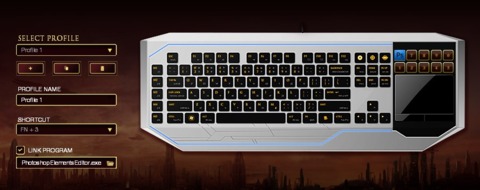
Speaking of slow, let's examine the built-in YouTube app. Razer includes a homescreen with popular social apps, but they actually pull up mobile versions of the website in question rather than custom applications. The YouTube "app" has the best UI of the bunch, but playback is jerky, rarely achieving smooth frame rates for any period longer than two seconds. We initially suspected this was due to a weak decoder built into the keyboard. A quick look into Windows Task Manager revealed our ignorance, but raises some new questions.
If the keyboard utilizes a desktop CPU, likely capable of decoding Flash video, why is the performance so weak on the keyboard’s screen? One assumption is that the trip through the USB cable is an added step for the data to hop, but this is an unprecedented analysis, so we can't honestly say one way or the other. It's possible that a software update could pull up videos with lower bitrates to alleviate the problem, but there are no options for that at the moment.
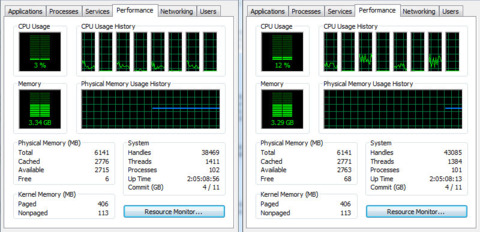
That still leaves the biggest question of them all unanswered: Why does our CPU idle higher when a video is paused than when a video is playing? In all our tests, we were consistently able to reproduce this anomaly. The CPU in our test machine (Intel Xeon @ 2.8 GHz) idled between 2 percent and 3 percent load when playing a YouTube video on the keyboard. This number skyrocketed to 10 to 11 percent load when the same video was paused. Considering that Razer promotes the ability to watch walkthroughs on YouTube as a feature of this product, it seems mighty absurd that it eats up a considerable amount of system resources if you decide to the pause the video and return to your game.
When examining Razer's Blade laptop, similar issues occurred. Although YouTube videos played more smoothly, the CPU spiked to 20 percent when paused. These numbers, and the scenario that causes them, are baffling to say the least.
Keyboard Build + Materials
It's clear that Razer focused its energy and budget on the Switchblade-UI, rather than the keyboard proper. The key switches Razer has perfected throughout its line of keyboards have been replaced by a mushy rubber membrane. It hinders typing speed and provides a very unsatisfying typing experience. Anyone who has the least bit of investment in the performance of their keyboard will balk the moment they type their first sentence.

The chiclet form factor of the keys isn't bad or good, but merely acceptable. The one downside is that Razer decreased the space between keys compared to its Black Widow line. This led to a number of typos during our typing tests. Curiously, the majority of keys feature glyphs from the Star Wars alphabet, Aurek Besh. We doubt anyone will find this valuable, especially when they appear similar to the sub-functions on other keys, resulting in a confusing mess of useful and useless icons.
The material that encases the keyboard is a thin, cheap-feeling plastic. What's worse is that the accent lighting creates weak points in the structure where you can bend and warp the material. The lights are also throwaway features, and it's worth noting that the key backlighting is a fixed golden hue, where the accent light on the perimeter of the board can be customized to your color of choice.
Unfortunately, this very expensive keyboard includes faults that midlevel keyboards manage to avoid. Somehow, Razer even screwed up the feet, which lift the keyboard at an angle that's so minor it's not even worth measuring. The lack of a number pad is slightly bothersome as well, but at least there's an app for a virtual one built into the Switchblade portion of the board.

The only notable feature of the keyboard proper is its extreme anti-ghosting measures. You can effectively input 10 key strokes at once, and they will all register in your OS. This works as described and should cover any combination of keys you could ever hope to pull off. In light of the macro capabilities of the board, the value of the anti-ghosting is somewhat diminished in the grand scheme of the keyboard.
Value / Conclusion
The SWTOR Keyboard from Razer introduces a number of great concepts that are too immature at this stage in the game. The placement and quality of the hardware in the Switchblade-UI is inconsistent and needs improvement. The rest of the keyboard is cheap, utilizing parts that are known to be low quality, and fail to meet the bar set by Razer’s own keyboards that sell for a third of the price of this one. The problem is, you can't screw up core functions of a device to add flashy secondary features, especially when they have their own share of problems.
Razer has the ability to support this hardware and fix some of the issues tied to software. The high cost and lack of performance mean that this product will reach only a small number of customers, so only time will tell if Razer will find value in further R & D to tie up these loose ends. This keyboard is an interesting experiment and we’d like to see an optimized, unattached, Switchblade-UI in some form down the road. In its current form, it won't help your gaming abilities, but it's a glimpse into Razer's future, and if this is the bottom of the hill, we can't wait to see what is waiting for us on the summit.
Got a news tip or want to contact us directly? Email news@gamespot.com
Join the conversation